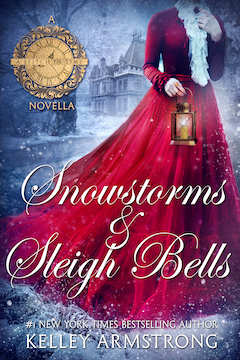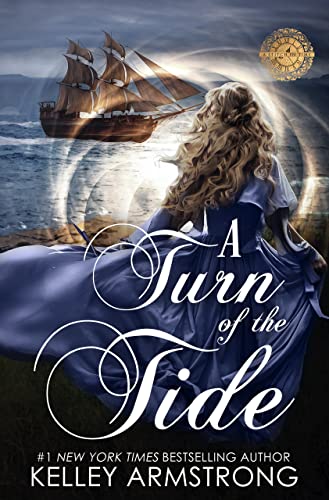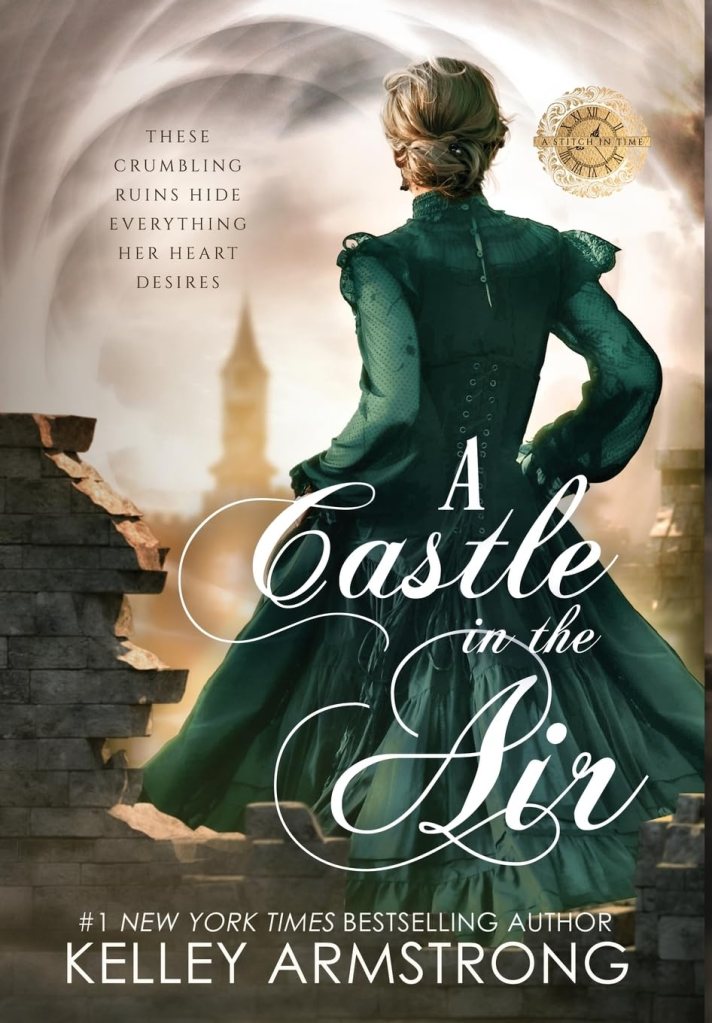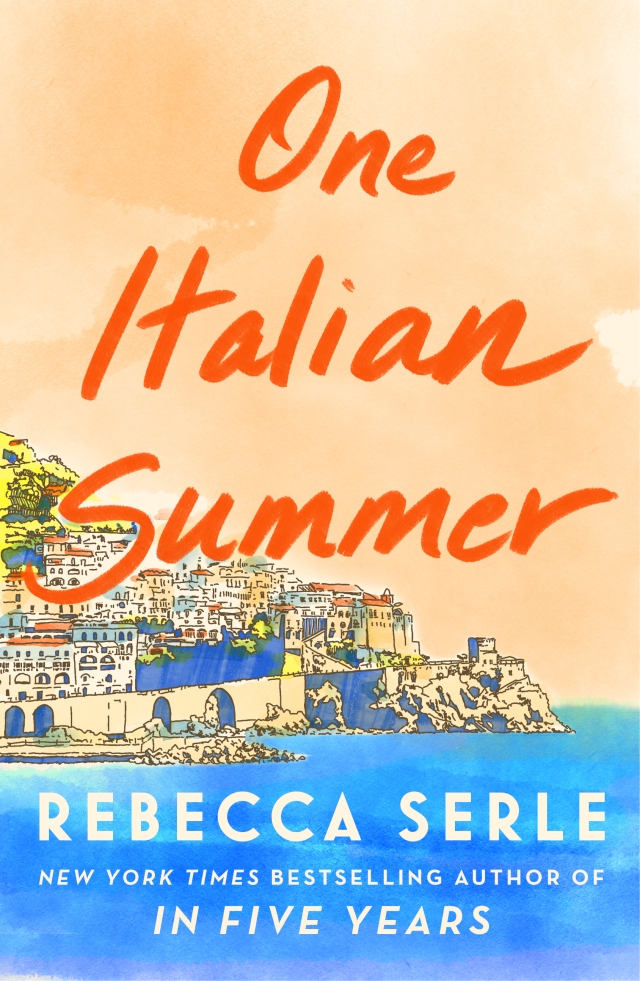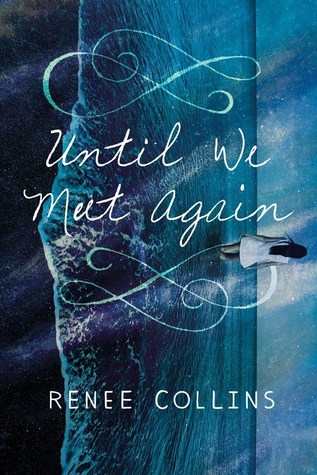
Title: A Twist of Fate
Series: A Stitch in Time, #2
Author: Kelley Armstrong
Publisher: Subterranean Press
Publication date: October 5, 2021
Length: 288 pages
Genre: Time slip/ghost story
Source: Purchased
Rating:
Four years ago, Rosalind Courtenay stumbled from the nineteenth century to the twenty-first, where she has been trapped ever since, leaving her husband and infant son behind. Now she’s found her way back.
The problem, of course, is how to explain her absence to her husband. Does he think she abandoned him? Has he remarried? Is he happy in a new life? Rosalind decides to don a disguise in hopes of answering her questions before showing up on his doorstep. Instead, a twist of fate has her mistaken for her young son’s new governess.
Rosalind has every intention of revealing herself as soon as August returns home from business. Until then, she’ll get to know her son, a quiet child who has inexplicably been abandoned by an endless stream of governesses. That’s when the hauntings begin. Rosalind has finally come home and something—or someone—doesn’t just want her gone. They want her dead.
I adored A Stitch in Time, the story of a 21st century woman who passes through a time stitch and lands two centuries in the past, where she reunites with the man who was once her secret childhood companion. In A Stitch in Time, we learn that William’s best friend’s wife is believed dead, after she set out riding one night and never returned. Her horse was found dead in the sea below a cliff — clearly, Rosalind had a tragic accident and fell to her death. But August has never accepted this as fact; despite the years that have passed, he’s convinced that she left him and their infant son.
In A Twist of Fate, we get Rosalind’s story, and it’s immediately captivating. Yes, Rosalind went out riding in the middle of the night, to retrieve the wedding ring she’d accidentally left behind in the kitchen of Thorne Manor. But hearing a strange noise from an upstairs room, in what was supposedly an unoccupied house, Rosalind ventures up to investigate, and falls through the time slip. Shocked and scared once she figures out what’s happened, she tries desperately to get back, but the portal seems to have closed. Alone in a strange world, Rosalind has no choice but to figure out how to get by, but she returns month after month to Thorne Manor to see if the way back has finally opened for her.
After four years and a chance encounter with William and Bronwyn in the 21st century, Rosalind realizes that her opportunity may finally have come — and it has. She manages the time passage, and is determined to get to her husband and son as quickly as possible.
On reaching August’s family’s country home, Rosalind is mistaken for the expected new governess. Learning that her husband is away on business, she takes this opportunity to spend time with her son and discover what she can about their lives, intending to tell August the truth as soon as he arrives. But complications arise, and Rosalind’s opportunity to reveal herself is delayed over and over again. Meanwhile, she spends time with her beloved boy Edmund, treasuring every precious moment, but fearing that she may be sent away (or sent to an asylum) if she can’t convince people of her true identity.
At the same time, Courtenay House appears to be haunted, and although Rosalind believes there is a ghost present, she doesn’t believe that the malicious tricks and nighttime scares she experiences are supernatural in origin. There’s a dangerous presence in the house, and it’s very much human in nature.
A Twist of Fate is an utterly engaging and absorbing story. Rosalind’s experiences are quite different that Bronwyn’s — she’s trapped in a strange world, separated from her husband and child, and although she manages to create a sort-of life for herself in the 21st century, she never stops aching for home. A true Victorian woman, Rosalind is also an independent individual, and so it’s quite fun to see her return back to her own time with some new-fangled ideas about motherhood, marriage, raising children, and women’s roles.
She and August truly love one another, but theirs was a marriage plagued by his irrational jealousy before her disappearance. I love that the author doesn’t reunite the two and magically erase all the prior troubles. Yes, they ultimately get a wonderfully romantic second chance at love, but they also have some hard conversations about their shared past, what went wrong, and what needs to change.
The mystery at the heart of the story — who is the ghost? who is the real threat? — is very well done, and had me guessing throughout. The unraveling of secrets and the revelations related to the mystery plotline are surprising and twisty, but fit together perfectly.
I loved seeing Rosalind’s time with Edmund, finding a way to care for and love her son even before he knows who she really is. They have a beautiful relationship, and it was also heartwarming to see what a loving father August became in Rosalind’s absence, definitely breaking with the time period’s societal norms regarding a father’s involvement in his child’s life.
I thoroughly enjoyed A Twist of Fate, and strongly recommend the series as a whole! There are two more novels (which I will absolutely read as soon as I can), and some Christmas-themed novellas that fit in between the main novels.
In fact, immediately upon finishing A Twist of Fate, I started the August and Rosalind novella, Snowstorms and Sleighbells, and will look forward to carrying on with the series. If you enjoy timeslip stories, lovely love stories, and a good mystery, then you must check out the Stitch in Time books.
Next in the series:

